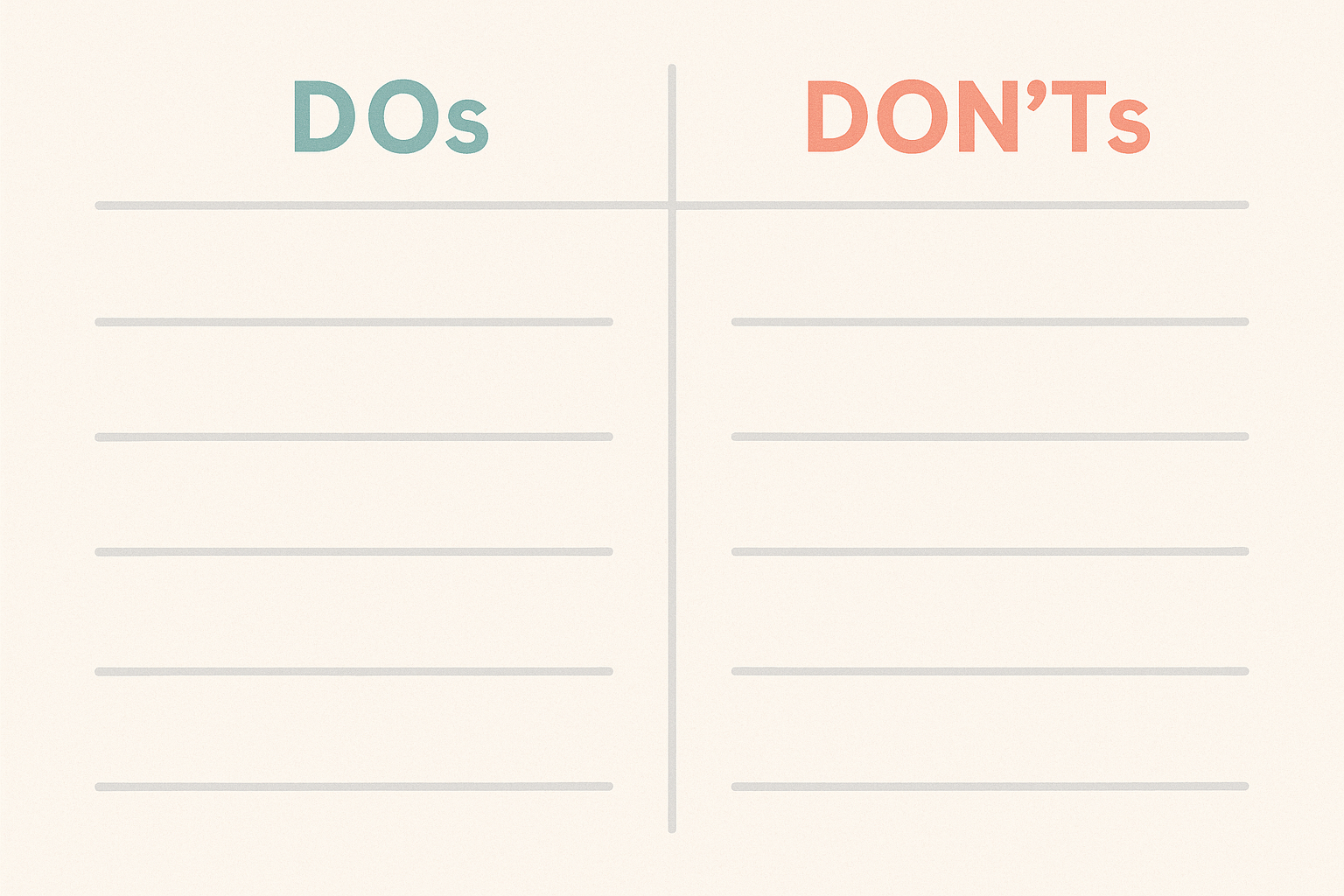DOs and DON'Ts of Connecting Strategy with Execution
DOs and DON'Ts of Connecting Strategy with Execution

Connecting strategy with execution starts and ends with people. To execute well, we must Create Clarity and Buy-in, Focus Execution, and Establish a Rhythm for Accountability. Dos and Don’ts for each of these areas are listed below.
Things to do are interdependent and complementary. If you are doing some of these but not others, expect additional friction in the execution or suboptimal performance. The ‘don’ts’ are derailers and are more common than we would like to admit.
CREATE CLARITY AND BUY-IN
DO
- Engage subordinate leaders in strategy development: Connecting strategy with execution starts with leveraging the ‘collective genius’ of the organization to develop the strategy. Engage appropriate levels of the organization in developing the strategy to incorporate different perspectives and intelligence.
- Create clarity with concise and repetitive communication: A well-developed strategy allows leaders to clearly articulate the objectives and measures of success. Make sure the people who are executing understand the importance and prioritize their effort to execute in their roles most efficiently. Use cascading messaging to communicate throughout the organization.
- Count the cost and commit the appropriate resources: The strategy may need to be adjusted to match the resources of the company. You may need to move people around, add or improve skill sets, introduce new technology, or change the way you are doing business. If the strategy requires significant change, understand your people’s capacity for change.
DON’T
- Create strategy in a vacuum: Probability for success will increase with improved knowledge and by considering varying perspectives.
- Assume people know or understand the strategy: Just because a strategy has been devised and discussed at various levels, one cannot assume the people who need to execute the strategy know or understand it. Even if you have presented the strategy a couple of times, it may take more discussions for people to ‘get it.’ Reinforce the understanding of the strategy and revisit frequently with clear and concise communication.
- Expect success without effort or cost: This is common – we have a million-dollar strategy requiring a hundred people to be executed in 6 months funded with a half-million dollars and staffed with 25 people that will realistically take a year.
FOCUS EXECUTION
DO
- Decentralize planning, execution, and decision-making. The direction is set and now the people must execute. Encourage, equip, and empower people to create plans and execute the strategy. This does not necessarily mean that there is no command and control, approval requirements, structure, or feedback mechanisms. Ensure those who are closest to the action and have the best view of the situation can do what is necessary to execute the strategy.
- Understand the current condition: We may know where we want to go, but it will be difficult to chart a course if we do not know where we are presently. Make sure there is a realistic assessment of the current condition prior to execution. Though this may take additional time, it is a necessary step and will result in a more informed approach. As the team executes, routinely reassess the current condition.
- Enable accountability – require action plans with well-defined measures and outcomes: Commitment is required for accountability by individuals, teams, and leaders. People need to be able to effectively measure the results of their efforts as well as the activity that leads to the results. People and teams must make a commitment and then be accountable for the execution.
DON’T
- Overcommit your resources: This goes along with the theme of focus. People generally only do one thing at a time very well. Do not saddle people with conflicting or extraneous initiatives or bog them down with unproductive work.
- Create unnecessary complexity: Simple scales and complex fails. Keep the execution as simple as possible to eliminate wasted effort, confusion, or conflict.
- Reject feedback from those executing the strategy: Just because we do not want to hear something does not mean it is wrong. Accept reality and then deal with it.
ESTABLISH A RHYTHM FOR ACCOUNTABILITY
DO
- Create a scorecard and review routinely. Drive focus with a rhythm for accountability at each level of the organization: Establish the appropriate rhythm for reviewing activities and results. The rhythm may be quarterly or monthly at senior levels and weekly or daily as you move closer to the first line. These routine meetings should focus the effort on the most important activity to execute the strategy. People can identify unnecessary or unprosperous effort and eliminate that effort. In addition to creating focus, the rhythm will create a natural feedback mechanism. This ties with the next Do: ‘Continuously learn and adjust.’ Without an appropriate pace where you are using a method such as PDCA or OODA, adjustments may be too slow or infrequent, leading to increased cost and lost time.
- Continuously learn and adjust: We may know where we are and where we want to go, but conditions do not always cooperate. We may need to change the planned route as conditions change. If we are consistently monitoring our actions and results, we can quickly learn and make adjustments that move us toward the goal.
DON’T
- Accept mediocrity: If people are committed and accountable, they will not accept mediocre results, poor performance, or bad behavior.
- Be afraid to recognize a bad plan and scrap it: People sometimes let their fear of reputational damage or the sunk cost fallacy lock them into a bad plan. Be honest with yourself and your team and make changes, as necessary.
Learn more at www.workfastconsulting.com or www.linkedin.com/company/workfast-consulting
Follow or connect with Matt Barnes: www.linkedin.com/in/mattbarnespe
Follow or connect with James Stovall: www.linkedin.com/in/jfstovall/


